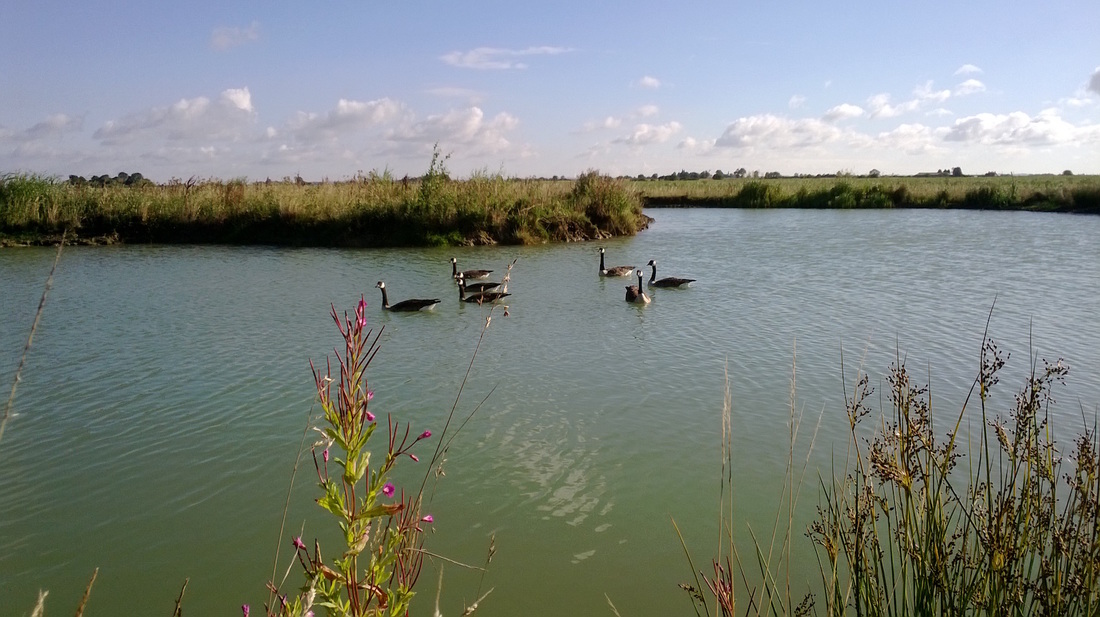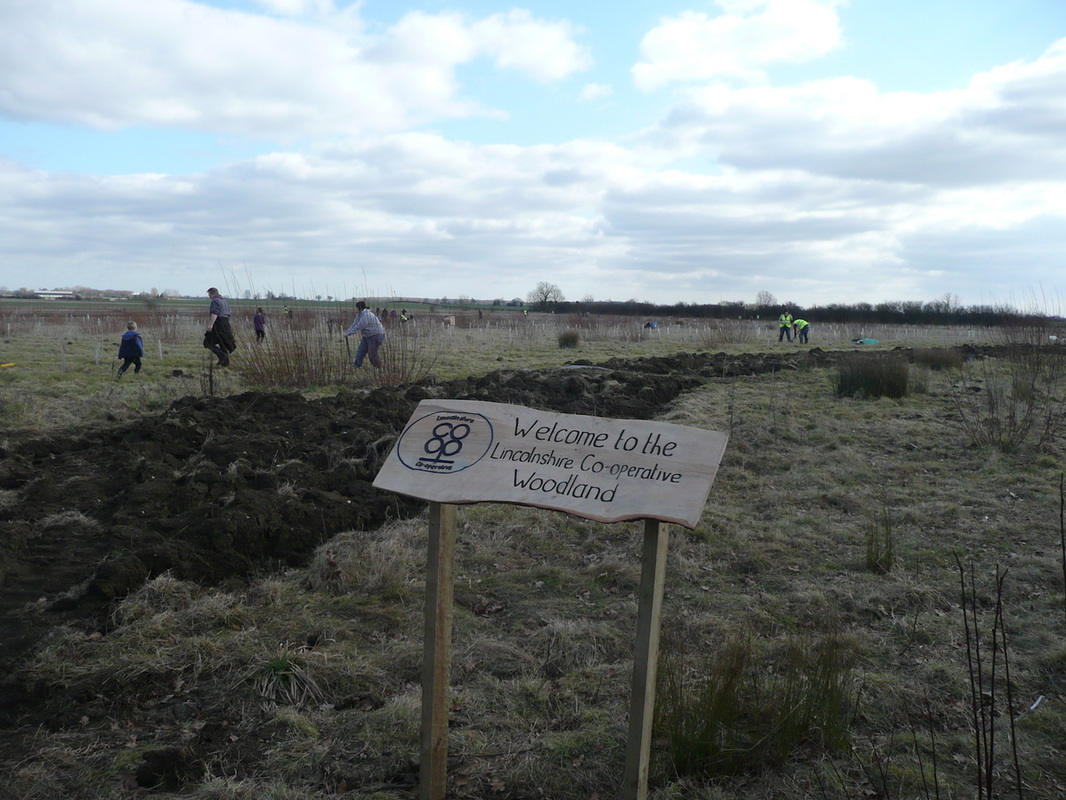Ashing Lane Nature Reserve is made up of areas of woodland and meadows of different ages, created by volunteers on what was once agricultural land. Watts Wood and Pickerings Meadow came first in 1990’s on land donated by Sylvia Watts and Elsie Pickering to Lincolnshire Wildlife Trust, and have been planted and managed by the family and LWT ever since. In 2009, the local landfill tax credit charity WREN bought adjacent land for LWT to create new meadows and also Monks Wood, managed by Nettleham Woodland Trust. The final area purchased by Lincolnshire Cooperative Ltd in 2012, to celebrate its 150th anniversary. It has since been planted and managed by NWT.
Details about species and habitat at Pickering's Meadow and Watts Wood on the Lincolnshire Wildlife Trust website. Just click on the names here.
Details about species and habitat at Pickering's Meadow and Watts Wood on the Lincolnshire Wildlife Trust website. Just click on the names here.
How to find Ashing Lane Nature Reserve
The main roads route from the Lincoln bypass - copy and paste these instructions to help you find ALNR
What3Words for the Ashing Lane turn off the A46 - dripping.initiates.glosses
...and for the LWT car park - stream.callers.ownership
...and for the LWT car park - stream.callers.ownership
|
The marker on the map is placed at the Threshold, easily recognisable from the picture in the header at the top of each page. The reserve can be accessed from the A46 north of Lincoln, near Dunholme. Ashing Lane is narrow, uneven and has ditches to the sides, so if you arrive by car drive slowly and carefully. There is a car park on the right close to the indicator shown on the map (see also the detailed map of the site).
You can also arrive by the footpaths or bridleways that lead to and through the reserve.
You can also arrive by the footpaths or bridleways that lead to and through the reserve.
Monks Wood and Coop Wood
The red numbers on the map will lead you round the woodland, the different features are described below:
- The Threshold: the main entrance was designed by Nettleham guides and scouts and children from Welton St Mary's Primary School to include living trees and architecture inspired by Lincoln Cathedral.
- Jubilee Walk: the avenue of 60 small-leaved lime trees celebrates the Queen’s Diamond Jubilee in 2012. It bisects the memorial garden.
- The Monk Oak: dedicated to Dennis Monk, long-time chairman of WREN, by his widow in 2009.
- Sylvia’s Gate between Monks Wood and Watts Wood is dedicated to Sylvia Watts, who died in 2014.
- Beatles Pond isn’t mis-spelt! The funding came from selling the autographs of the Fab Four. There is a hibernaculum for great crested newts.
- Raptor boxes: If you look towards the south you will see nesting boxes on old electricity poles. You may spot owls and kestrels.
- South Glade: native woodland naturally has open areas, so this glade was in the original design. It is also the home of the Book of Oaks stone, celebrating the pledge of 100 oak trees for Lincoln Cathedral roof timbers in centuries to come.
- The Coop Wood is a wetter habitat where willows thrive. A coppicing regime and new planting is in place for basket weaving and willow sculptures.
- The Lake: the heavy clay of this field made it ideal for a lake, dug in March 2012. Duckhouses designed and built by upwards of forty local scouts and more than ten adult helpers were placed on the ‘islands’ in July 2015.
- The Bridge, also designed by young people, inspired by a larger version!
- The Wykes: This lower lying area of land was scraped out by a digger and planted with wetland species in March 2011. The Wykes is named after Bryan and Hugh Wykes, the last to farm the area.
- North Wood: 2,566 trees were planted here in one hour during Tree O’Clock in December 2009 – an international planting event.
- AAA: The hard paths of the All Abilities Area are suitable for wheelchairs and pushchairs in all weather. A greater variety of trees and shrubs have been planted, and a small pond dug, to increase the colour, texture and sounds. The open space near the willow tunnel is being developed as a ‘classroom’.
New Projects
Basketry Willow
An area of Coop Wood has been devoted to growing some willows for basket making. The species of willow planted are some of those that used to be grown in the Trent Valley in Lincolnshire when basket weaving was a common trade - before plastic carrier bags! The plan is to be able to run basket making workshops to introduce people to the craft.
Wild Flower Meadow
We are working with the Forestry Commission at Chambers Farm Wood to develop a greater diversity of native wildlflowers, initially on a small area in the All Abilities Area. Many species are starting to show well throughout Monks Wood and the butterflies were certainly finding the plants last summer.
Basketry Willow
An area of Coop Wood has been devoted to growing some willows for basket making. The species of willow planted are some of those that used to be grown in the Trent Valley in Lincolnshire when basket weaving was a common trade - before plastic carrier bags! The plan is to be able to run basket making workshops to introduce people to the craft.
Wild Flower Meadow
We are working with the Forestry Commission at Chambers Farm Wood to develop a greater diversity of native wildlflowers, initially on a small area in the All Abilities Area. Many species are starting to show well throughout Monks Wood and the butterflies were certainly finding the plants last summer.
|
Nest Boxes
Regular visitors will have noticed that 20 new nest boxes for small bird species have been put up in South Wood. These were made by Year 9 students at St Peter and St Paul Catholic Voluntary Academy and donated to the reserve. The boxes are numbered and are marked on the map above - look for the dark green nest box shapes with a yellow number on. As the spring progresses it might be more difficult to see the boxes, but please do let us know if you see any nest building, feeding or fledging activity at any of the boxes. |
What about diversity?
Get involved?
|
Would you like to participate in activities at Ashing Lane Nature Reserve? Do you belong to a group that would like an occasional outdoor activity ?
There are lots of ways you can participate in NWT activities, from joining a working party for hay raking, mulching and other outdoor tasks, to joining the committee to help make decisions about this and other projects. Follow the links.... |
|
More about the development of Monks Wood
Monks Wood was formerly agricultural land, farmed by the Wykes family of Dunholme. In 2008 three fields were purchased by Lincolnshire WREN who gift aided it to Lincolnshire Wildlife Trust as a memorial site for their late Chairman, Dennis Monk; hence the name Monks Wood. In turn 14.7 hectares (36 acres) were leased to Nettleham Woodland Trust (NWT) for the purpose of creating a new woodland. NWT obtained a grant from the Forestry Commission to help fund the creation of a new native woodland comprised of tree and shrub species found in lowland Britain. Species which include Oak, Ash, Small Leaved Lime, Birch, Field Maple, Alder. Woody shrubs are also planted on the edges in including Hazel, Guelder Rose, Hawthorn and Spindle. Natural regeneration (seeding) of willows is also an important component of the evolving woodland. |
Planting into the corn stubble started in March 2009 and completed in Dec 2010. The majority of the work was carried out by the local community on a voluntary basis. Trees of 60 - 80 cm in height were planted at 2.4 metre spacing and protected with spiral guards to protect them from rabbit and hare damage. A total of 22,000 trees and shrubs have been planted.
The land is heavy wet clay, so in order to provide all season public access a network of raised rides (walks) were created and sown with grass. The verges of the rides were also sown with wild flower seeds.
During the first four years the trees were spot sprayed around their base with herbicide and inter row mowing carried out to control agricultural weeds. The trees are now well established and require little maintenance for the next twenty years or so, although some coppicing of hazel and willow will take place.
Open space is an important element of the design and mowing and raking of the rides, margins and woodland glades is carried out throughout the summer and autumn.
The land is heavy wet clay, so in order to provide all season public access a network of raised rides (walks) were created and sown with grass. The verges of the rides were also sown with wild flower seeds.
During the first four years the trees were spot sprayed around their base with herbicide and inter row mowing carried out to control agricultural weeds. The trees are now well established and require little maintenance for the next twenty years or so, although some coppicing of hazel and willow will take place.
Open space is an important element of the design and mowing and raking of the rides, margins and woodland glades is carried out throughout the summer and autumn.
|
Tree o'Clock in North Wood
On Saturday, 5th December, NWT took part in TREE O’CLOCK, a Guinness Book of World Records attempt to plant the most number of trees in one hour in multiple locations, organised by BBC Breathing Places. BBC Radio Lincolnshire provided live coverage of the event and Lincolnshire Echo and Market Rasen Mail sent reporters. Although the world record attempt was not successful, NWT greeted around 120 adults and children and, between them, they planted an incredible 2566 trees in one hour between 11.00 and 12.00. It was a lovely sunny day, which certainly helped everyone enjoy the occasion. Afterwards, Nettleham Scout Troop provided bacon butties and hot soup to the hungry tree planters. |
|
More about the development of Lincolnshire Cooperative Wood.
The 4.3 hectare (10 acre) area of Lincolnshire Cooperative Wood adjoins Monks Wood at it's eastern end. This arable field was abandoned because it was too wet to farm and was subsequently purchased by Lincolnshire Cooperative Society as part of their 150 years anniversary celebrations to support Nettleham Woodland Trust. NWT took over the site on a long term lease with the purpose of creating a wet woodland to help meet the Lincolnshire Biodiversity Action Plan target for the creation of wet woodland. |
|
Tree planting was carried out by Lincs Coop staff and members in 2012, species include willows, alder, birch and native shrubs. Natural willow species have also colonised the site.
A lake has been created in the woodland, this supports the East Midlands Declining Woodlands Bird Project. This feature together with the wet woodland environment will benefit bird species such as, Willow Tit, Spotted Flycatcher, Woodcock, Willow Warbler, Garden warbler and hopefully Nightingale. A circular raised walk gives public access to the woodland and lake throughout the year. Coppicing of the osier willows will maintain open space for ground nesting birds. |






